Best PHP Scripts to Buy in December 2025
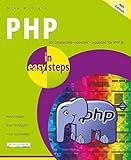
PHP in easy steps: Updated for PHP 8


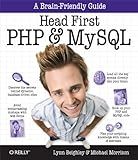
Head First PHP & MySQL: A Brain-Friendly Guide


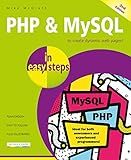
PHP & MySQL in easy steps: Covers MySQL 8.0


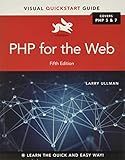
PHP for the Web: Visual QuickStart Guide


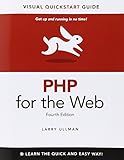
PHP for the Web: Visual QuickStart Guide


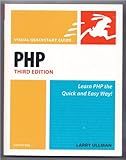
PHP for the World Wide Web, Third Edition


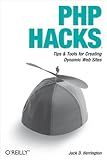
PHP Hacks: Tips & Tools For Creating Dynamic Websites
- AFFORDABLE PRICES FOR QUALITY USED BOOKS IN GREAT SHAPE.
- ENVIRONMENTALLY FRIENDLY CHOICE: REDUCE WASTE WITH USED BOOKS.
- FAST SHIPPING ENSURES QUICK DELIVERY FOR EAGER READERS.


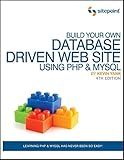
Build Your Own Database Driven Web Site Using PHP & MySQL
- AFFORDABLE PRICES FOR QUALITY PRE-LOVED BOOKS!
- ENVIRONMENTALLY FRIENDLY CHOICE: REDUCE, REUSE, READ!
- UNIQUE FINDS: DISCOVER RARE TITLES AND HIDDEN GEMS!


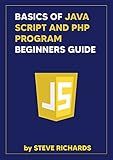
BASICS OF JAVA SCRIPT AND PHP BEGINNERS GUIDE


To remove duplicate values in a PHP loop, you can make use of an associative array where the values act as keys. Here is a step-by-step explanation of how it can be done:
- Declare an empty associative array to store unique values:
$uniqueValues = array();
- Begin your loop, which can be a foreach loop, for loop, or while loop depending on your requirements.
foreach ($array as $value) { // Loop through each value in your original array }
- Inside the loop, check if the current value already exists as a key in the associative array:
if (!array_key_exists($value, $uniqueValues)) { // If the value doesn't exist as a key in $uniqueValues // Add it as a key-value pair in the associative array $uniqueValues[$value] = true; }
- You can perform any desired operations or actions with the unique values inside the if condition before moving to the next iteration of the loop.
- Once the loop has finished, you will have a new array $uniqueValues containing only the unique values from your original array.
By using this approach, any duplicate values encountered during the loop will be automatically discarded, as associative arrays in PHP cannot have duplicate keys.
Remember to adjust the loop and the array variable names according to your actual code.
What is the purpose of array_merge() function in PHP?
The purpose of the array_merge() function in PHP is to merge multiple arrays into a single array. It takes two or more arrays as input and returns a new array that contains all the values from the input arrays. The resulting array will have consecutive numeric keys if the input arrays have numeric keys, whereas associative keys will be preserved and non-numeric keys will be converted to integers. If two or more input arrays have the same string keys, the later values will overwrite the previous ones. The array_merge() function is useful in scenarios where you need to combine multiple arrays into a single array.
How to remove duplicate values in a PHP loop?
To remove duplicate values in a PHP loop, you can use the array_unique() function. Here's an example:
// Sample array with duplicate values $values = array(1, 2, 3, 4, 2, 5, 6, 3, 4);
// Remove duplicates using array_unique() $uniqueValues = array_unique($values);
// Loop through the unique values foreach ($uniqueValues as $value) { echo $value . " "; }
Output:
1 2 3 4 5 6
In this example, the array_unique() function removes the duplicate values from the original array $values. The resulting unique values are then looped through and displayed using a foreach loop.
How to remove duplicate values from an XML file using PHP?
To remove duplicate values from an XML file using PHP, you can follow these steps:
- Load the XML file using the SimpleXMLElement class in PHP.
$xml = new SimpleXMLElement(file_get_contents('your_file.xml'));
- Convert the loaded XML object into an array using the json_encode and json_decode functions.
$xml_array = json_decode(json_encode($xml), true);
- Remove duplicates from the array using the array_map and array_unique functions.
$new_array = array_map('unserialize', array_unique(array_map('serialize', $xml_array)));
- Create a new SimpleXMLElement object and add each element from the new array.
$new_xml = new SimpleXMLElement(''); array_walk_recursive($new_array, array($new_xml, 'addChild'));
- Save the new XML file.
file_put_contents('new_file.xml', $new_xml->asXML());
Now, you will have a new XML file without any duplicate values.
What is the syntax for array_slice() in PHP?
The syntax for the array_slice() function in PHP is as follows:
array_slice(array $array, int $offset, ?int $length = NULL, bool $preserve_keys = false): array
- $array: Required. The input array from which the slice will be extracted.
- $offset: Required. The starting index of the slice. If positive, it will start from that position, if negative, it will start from the end of the array.
- $length: Optional. The length of the slice. If specified and positive, the resulting array will have up to that many elements in it. If negative, the slice will end that many elements from the end of the array. If null or not set, the resulting array will contain all elements from the offset to the end of the array.
- $preserve_keys: Optional. A boolean parameter that indicates whether the original array's keys should be preserved in the resulting slice. If set to true, the resulting array will include the original keys, if set to false (default), the resulting array will have new keys starting from 0.
The array_slice() function returns the extracted slice as an array.
What is the difference between for and foreach loop in PHP?
The main difference between for and foreach loops in PHP is the structure and purpose.
The for loop is a general-purpose loop that allows iterating a specified number of times. It consists of three components: initialization, condition, and iteration. You can control the iteration process by manually incrementing a counter variable within the loop. Example:
for ($i = 0; $i < 10; $i++) { // loop code }
The foreach loop, on the other hand, is used specifically for iterating over arrays and objects. It automatically assigns each element of the array/object to a specified variable for each iteration, making it easier to work with structured data. Example:
$array = [1, 2, 3, 4, 5]; foreach ($array as $value) { // loop code }
In summary, for loops are more flexible and can be used for any kind of iteration, while foreach loops are specifically designed for iterating over arrays and objects.
